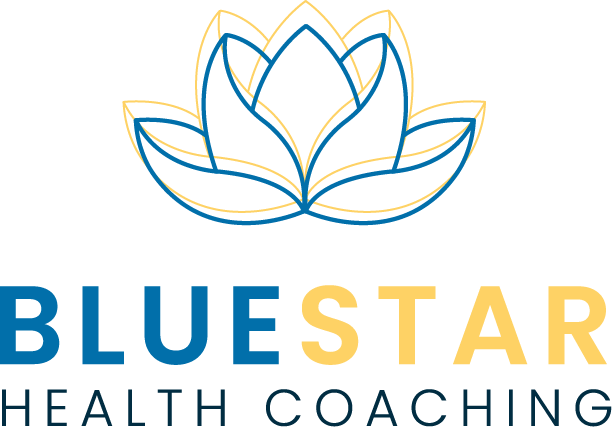What Makes us human & healthy ? read the label
12th December 2022
After an 8-year-old girl was taken to the emergency room with a bewildering array of life-threatening problems, she was eventually diagnosed with an extremely rare genetic condition called ROHHAD. However, something made this girl’s diagnosis even more puzzling; she has an identical twin sister who has shown no signs of this genetic disease (Rettner 2011). Since identical twins share the same fertilized egg, they should have the same DNA. Nevertheless, new findings challenge that notion. In Iceland, researchers looked at 381 pairs of twins; only 38 were genetically identical. Most differences may have happened through mutations during development (Jonsson 2021).
Genes can change and mutate; many can be switched on or off depending on other environmental challenges. But the story does not end here. We harbor on our skin and inside our bodies a vast number of bacteria (known as the microbiome). If you are healthy, many of these are of the “good kind.” We have co-evolved with these organisms during our evolution, creating a synergistic relationship. Gradual environmental changes, like food scarcity, allowed us to co-evolve more effectively to survive by conserving energy. Today, rapid modernization and changes to our diet and environment have not allowed us to adapt, posing a challenge to our human health (Dominguez-Bello et al. 2019).
Suppose we were bold enough to list the essential Nutritional Facts of what makes us human. In that case, we must acknowledge the role of our microbiome.
read the label
If you “read the label” we have almost 360 times more bacterial genes than human genes! We are genuinely co-dependent on our microbiome; it is what makes us human (Sender 2016, NIH News Release 2012).
Our health depends on our human-to-bacterial connection.
Being Human is about the connection between our human-self and bacterial-self.
Do you get butterflies in your stomach when you are nervous? Or have you heard the advice to "trust your gut" in response to an event your brain has not fully processed? Your gut's health is interrelated with your brain health (Berding et al., 2021). The gut bacteria (microbiota) can "talk" to your brain, and your brain can "talk" to your gut.
In 2015, researchers investigating a link between a mother's diet and the development of autism in her children stumbled onto microbiome research. They discovered that the mother's diet eliminated a select bacterium in their children called L. reuteri. Using mice exhibiting social deficits due to a deficiency in L. reuteri, they showed that a treatment to restore this gut bacteria also restored normal social behaviors. At the same time, the mouse brains excreted oxytocin, a hormone known to cause social bonding (Buffinton et al., 2016). Treatment in humans is proving to be more complicated than in mice, but a lot of exciting research is happening in this area (Johnson, 2019). Many brain disorders, such as depression, autism, and Alzheimer's, are clinically associated with poor gut health (Kesika et al., 2021).
It is well established that this gut-brain communication is bi-directional, where your brain and gut are involved in constant crosstalk (Sun et al., 2020). The gut is sometimes called the "second brain." So, when someone says, "it is all in your mind!" you should ask, "which mind?".
The bottom line is to be healthy in body and mind, we need our bacterial-self to be healthy, or at least the "good" bacteria in the "right" balance (Mohajeri et al., 2018). Feeding your gut the proper diet is easier said than done. We are all starting with different gut microbiomes. Two people can eat the same food, such as rice, and have dramatically different physical responses – we digest food based on our unique microbiomes (Weizmann Direct, 2015).
Eating for two! starting the process
In a sense, you are eating for two, your human-self and your bacterial-self. However, what happens when your gut or your brain are not working right? Experts love to say: "Eat Unprocessed whole foods". But what are unprocessed whole foods, and how do you get started?
Processed Foods?
All processed foods are not the same. Some processing kills harmful pathogens and makes nutrients more bio-available, e.g., pasteurized milk and yogurt. Some processing removes the nutritional value, adds undesirable ingredients, and even triggers food cravings, e.g., jelly donuts.
Healthier, processed foods include:
yogurts (low in sugar)
frozen or cooked fresh vegetables
frozen berries
fermented vegetables, such as sauerkraut, kimchee, and pickles (no sugar added)
cured olives
canned fish such as sardines or cooked salmon.
Whole Foods?
Generally, this refers to foods that are unprocessed or minimally processed; this can include raw, chopped, pureed, frozen or cooked vegetables or fruits. Examples of healthy whole foods include:
fresh vegetables (even frozen or cooked)
fresh fruits (sparingly or avoid if you have sugar cravings)
nuts & seeds
legumes (beans, lentils)
unrefined whole grains
herbs, and spices (ginger, turmeric, garlic)
Everyone responds differently to whole foods due in part to your gut's microbiome. Many people with diabetes find they must avoid or minimize foods that spike their blood glucose, such as starchy vegetables, pasta, bread, or rice.
Crowding Out & Awareness of Cravings?
Eating well does not always mean depriving yourself of foods you love. If you want to feed your "whole self," start by adding healthy choices of whole and processed foods, this strategy is known as crowding out. Another method is to become aware of food cravings and potential triggers. Cravings are very stressful and can signify many different types of problems. Triggers can include stress, hormonal imbalances, or the consumption of highly processed foods designed to keep you wanting more, like potato chips, "betcha can't eat just one!" (Spritzler 2022, Tarman 2022, Jonsson 2015). Also known as hyperpalatable foods, these trigger foods are designed to "short-circuit" the mechanism in your brain that says you are full (Science Daily 2019).
Introducing healthy options is a great way to start your journey when "eating for two." Adding healthy foods to your diet and becoming aware of what your food triggers can be decisive first steps to feeling your best.
If you need health coaching to support your journey, consider signing up for a free health history to learn more.
-
Berding et al. Diet and the Microbiota-Gut-Brain Axis: Sowing the Seeds of Good Mental Health. Adv Nutr. 2021 Jul 30;12(4):1239-1285. doi: 10.1093/advances/nmaa181. https://www.ncbi.nlm.nih.gov/pmc/articles/PMC8321864/
Buffington et al. Microbial Reconstitution Reverses Maternal Diet-Induced Social and Synaptic Deficits in Offspring. Cell 2016 165(7), 1762-1775. DOI: https://doi.org/10.1016/j.cell.2016.06.001
Dominguez-Bello et al. Role of the Microbiome in Human Development. Gut 2019 68(6): 1108-1114. https://www.ncbi.nlm.nih.gov/pmc/articles/PMC6580755/
Johnson, G. L. Reuteri and the Best Probiotics for Autism. On line article 05JAN2019 Autisticworld.com https://www.autisticworld.com/lactobacillous-reurteri-probiotics-autism/
Jonsson et al. Differences between germline genomes of monozygotic twins. Nature Genetics 2021; 53: 27-34. https://www.nature.com/articles/s41588-020-00755-1?CJEVENT=19552003418511ed80a78a5d0a82b820
Jonsson, Bitten (RN). What is sugar addiction? Part 1: How to stop food and sugar cravings. On line video 21NOV2015 DietDoctor.com https://www.dietdoctor.com/first-part-of-our-sugar-addiction-video-course-free-for-all
Kesika, P. et al. Role of gut-brain axis, gut microbial composition, and probiotic intervention in Alzheimer’s disease. Life Science 2021 Jan 1;264. https://www.sciencedirect.com/science/article/abs/pii/S0024320520313801?via%3Dihub
Mohajeri et al. The role of the microbiome for human health: from basic science to clinical applications. Eur J Nutr. May 2018;57(Suppl 1):1-14. https://www.ncbi.nlm.nih.gov/pmc/articles/PMC5962619/
NIH News Release. NIH Human Microbiome Project defines normal bacterial makeup of the body. 13JUNE2012. https://www.nih.gov/news-events/news-releases/nih-human-microbiome-project-defines-normal-bacterial-makeup-body
Rettner, Raael Medical Mystery: Only 1 Identical Twin Has Rare Illness, online article Livescience.com 05AUG2011. https://www.livescience.com/15429-rohhad-disorder-twins-genetics.html
Science Daily. Data-driven definition of unhealthy yet pervasive 'hyper-palatable' foods. Online article 05NOV2019 ScienceDaily.com https://www.sciencedaily.com/releases/2019/11/191105104436.htm
Sender, Ron et al. Revised estimates for the number of human and bacteria cells in the body. PLOS Biology 2016 https://journals.plos.org/plosbiology/article?id=10.1371/journal.pbio.1002533
Spritzler, Franziska (RD, CDE). How to manage hunger when trying to lose weight. Online article 17JUN2022 DietDoctor.com https://www.dietdoctor.com/low-carb/hunger
Sun, Li-Juan et al. Gut hormones in Microbiota-gut-brain cross-talk. Chinese Medical Journal 2020, 133(7):826-833. https://www.ncbi.nlm.nih.gov/pmc/articles/PMC7147657/
Tarman, Vera (MD). Food addiction: 5 signs & how to beat it. Online article 08SEP2022. DietDoctor.com https://www.dietdoctor.com/science/food-addiction
Weizmann Direct The algorithm diet – Same food, different blood sugar responses. BREIF 2(3) 27 DEC 2015. https://www.weizmann.ac.il/WeizmannCompass/sections/briefs/the-algorithm-diet also see a video animation describing the study https://www.youtube.com/watch?v=Ryc5M3Ciytg


